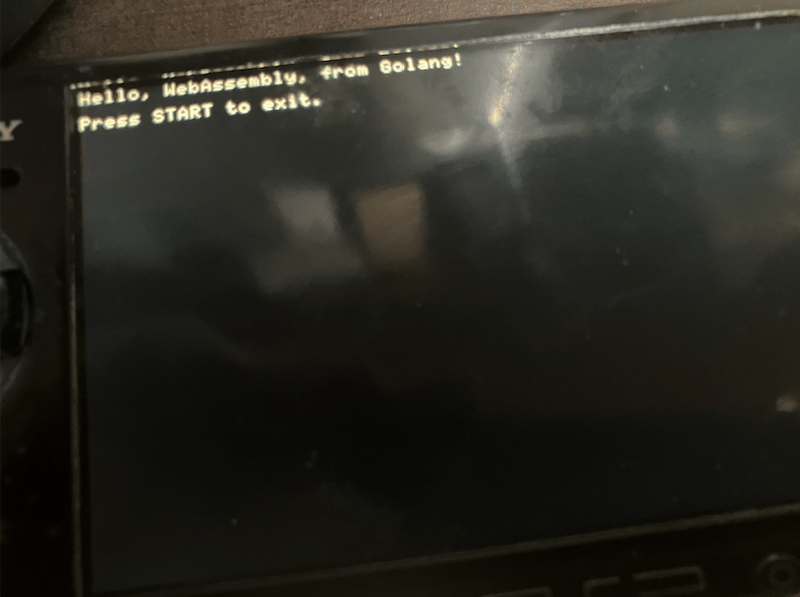本文介绍了如何在psp上运行程序的非传统方法:通过tinygo将go代码编译成webassembly (wasm),再利用wasm3运行时在psp上执行。原生编译go到psp几乎不可能,因为go的mipsle架构支持依赖。 作者选择wasm作为中间层,绕过了这个难题。
核心代码片段展示了一个简单的“Hello, world!”示例:
package main import "unsafe" //go:wasmimport debug println func println(ptr unsafe.pointer, len int32) //export start func start() { main() } func main() { message := "hello, webassembly, from golang!" println(unsafe.pointer(unsafe.stringdata(message)), int32(len(message))) }
登录后复制
该代码调用运行时提供的println函数。 运行时本身使用C语言和Wasm3库实现,println函数的C语言实现如下:
#define printf pspDebugScreenPrintf static const void* host_debug_println(IM3Runtime runtime, IM3ImportContext ctx, uint64_t *stack, void *mem) { uint32_t ptr = (uint32_t) stack[0]; uint32_t length = (uint32_t) stack[1]; uint8_t* bytes = (uint8_t*)mem + ptr; char buffer[256]; if (length >= sizeof(buffer)) { length = sizeof(buffer)-1; } memcpy(buffer, bytes, length); buffer[length] = ''; printf("%s ", buffer); return NULL; }
登录后复制
该实现将Wasm传递的内存指针和长度转换为C字符串,并使用pspDebugScreenPrintf打印到PSP屏幕。
作者还指出,尝试使用Rust和Wasmi作为运行时在上成功,但在实际PSP硬件上失败了,怀疑是内核模式相关的问题。 最终,C语言和Wasm3的组合成功地在PSP上运行了Wasm代码。

项目中面临的挑战包括:
- Wasm3交叉编译: 需要使用PSP工具链编译Wasm3。作者为此创建了一个fork的仓库:wasm3-for-psp。
- TinyGo构建选项: 找到正确的TinyGo构建命令(tinygo build -o hello.wasm -target=wasm -no-debug mn.go)花费了大量时间。
- 导出主函数: 由于目标并非WASI,需要显式导出start函数作为程序入口点。
作者认为,这种方法可以扩展到其他支持Wasm编译的语言,并鼓励其他开发者尝试。
以上就是PSP 上的 Wasm TinyGo的详细内容,更多请关注php中文网其它相关文章!
 微信扫一扫打赏
微信扫一扫打赏
 支付宝扫一扫打赏
支付宝扫一扫打赏

